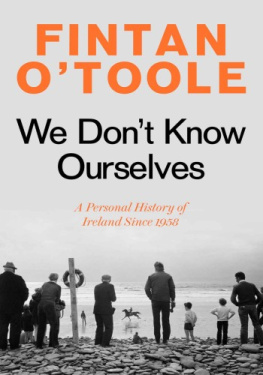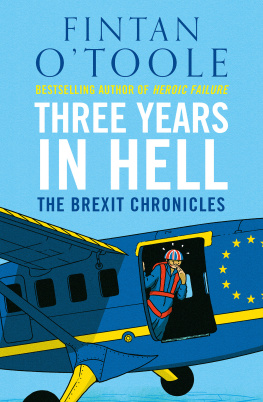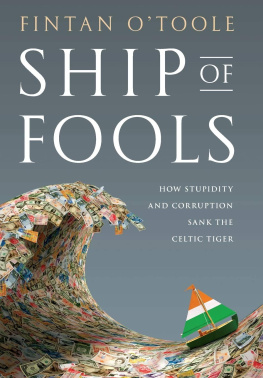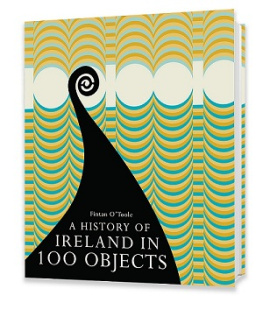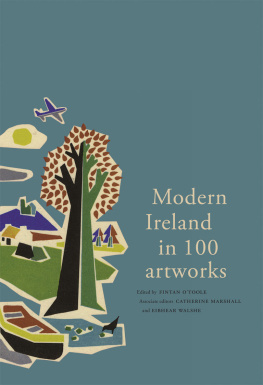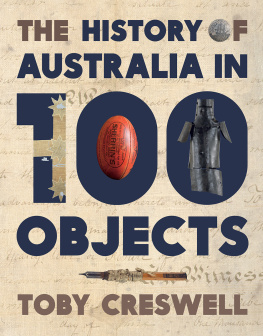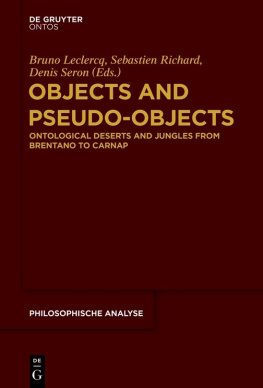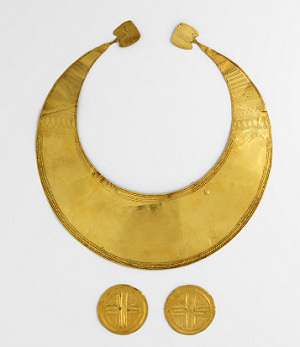Colophon
A History of Ireland in 100 Objects
First published 2013
by Royal Irish Academy.
19 Dawson Street
Dublin 2
www.ria.ie
Text copyright 2013 The Irish Times
Design, typesetting and layout 2013 Royal Irish Academy
This is a project of

ISBN 978-1-908996-19-0
All rights reserved. The material in this publication is protected by copyright law. Except as may be permitted by law, no part of the material may be reproduced (including by storage in a retrieval system) or transmitted in any form or by any means; adapted; rented or lent without the written permission of the copyright owners.
British Library Cataloguing in Publication Data. A CIP catalogue record for this book is available from the British Library.
Copyeditor: Helena King
Project Coordinator: Pauline McNamara
Digital Specialist: Geoffrey Keating
Design: Fidelma Slattery
Academic Mentor: Peter Harbison
8. Coggalbeg gold hoard, 23002000 BC
In April 2009 garda in Roscommon announced that they had recovered, from a rubbish skip in Dublin, some rather unusual objects: wrapped in a sheet of paper, and weighing just under 80g between them, they had been in a safe stolen from a pharmacy in Strokestown.
Following the robbery, the owners told investigating garda that the safe had contained three pieces of gold jewellery. From the description provided, curators from the National Museum believed the jewellery to be gold ornaments of the Early Bronze Age period. Due to the thin and flat nature of the objects and their extremely light weight (78g in total, about 2 ozs), it became apparent that the thieves might have entirely missed them. What the garda recovered from the smelly skip were an Early Bronze Age lunulaa crescent-shaped collarand two gold discs of the kind found at Tedavnet. The lunula (the word was first applied in the eighteenth century and is Latin for little moon) was made by beating gold into a very thin sheet on which decorations were incised or impressed with considerable skill. Like other lunulae, the Coggalbeg example is a very clever object: producing a highly impressive and seemingly large token of high status from a relatively small amount of gold.
The ornaments, which had been dug up from a bog at Coggalbeg, Co. Roscommon, in 1945, make up a unique assemblage of objects. They represent the first time ever that we have an association between the discs and the lunula, because the discs would be considered amongst the earliest gold ornaments and the lunula as coming a little bit later, says Mary Cahill of the National Museum. The appearance of discs and a lunula together opens up the possibility that they may have functioned as part of the same set of regalia, with the discs representing the sun and the lunula the moon. More than 80 of the 100-plus gold lunulae found in western Europe come from Ireland; thus offering the first strong evidence we have of a distinctively Irish cultural form in gold. Instead of Ireland adopting influences from abroad, the process in this case seems to work the other way: Irish gold lunulae spread to Britain, and their shape is copied in necklaces of other materials, such as jet and amber.
99. Anglo Irish Bank sign, 20002011
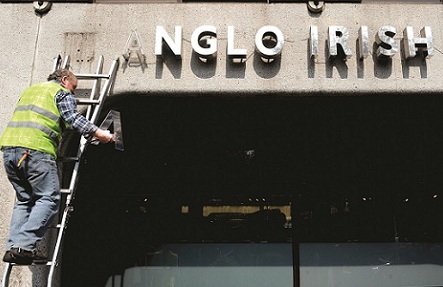
On 20 April 2011 a small crowd gathered at St Stephens Green in Dublin to watch this sign being taken down outside the headquarters of Anglo Irish Bank. They gave a small cheer as it was dismantled. When the sign had been erected over a decade earlier, its design drew on iconic objects of Irelands past:
Based on early Irish references such as flint arrowheads, typography from the Book of Kells and crafted gold artefacts, the simplicity of the image sets the tone for a more cohesive corporate identity programme and spearheads measurable improvement in brand awareness.
By the time the sign was removed, Anglo Irish had certainly achieved a very high level of brand awarenessas one of the most notorious banks in world history. It was founded in 1964, but by 1987, its first full year as a publicly quoted company, it had loans of just 92 million and profits of just 1.45 million. At its height in 2007 Anglo was theoretically valued at over 10 billion; its annual profits hit 1.2 billion. Most of that growth was concentrated in the first seven years of the twenty-first century, during which its share price rose by 2000 per cent. Over 80 per cent of its loansit lent a staggering 18 billion in 2007 were related to property. The bank epitomised the vast Irish property bubble that burst with ruinous consequences in 2008.
The Irish economy had begun to grow rapidly from 1995. The expansion of world trade following the collapse of the Soviet Union and the opening up of China; the boom in information technology; a young and increasingly well-educated population; favourable tax rates that continued to attract multinational corporations; and social changes creating a huge increase in the number of women in the workforceall were factors in a surge of prosperity.
The value of Irish exports more than doubled between 1995 and 2000. Unemployment halved in the course of the decade, while Gross Domestic Product per head of population rose from three-quarters of the European Union average to 111 per cent. Mass emigration was replaced by a remarkable wave of inward migration from central and eastern Europe, Africa and elsewhere. Ireland became the great success story of economic globalisation.
In reality, the real Irish boom had ended by 2003 and was replaced by a frenzy of investment in property. Irelands membership of Europes new currency, the euro, which came into circulation on 1 January 2002, made credit cheap and easily available. This credit, most of which came ultimately from banks in Germany, France and Britain, was mainly spent on property: bank lending for construction increased between 1999 and 2007 from 5.5 billion to 96.2 billion. When the house of cards collapsed in 2008, Anglo was nationalised and eventually wound up, leaving Irish citizens with a bill of around 29 billion and an expensive lesson in the need to remember history.
Decommissioned AK47, 2005
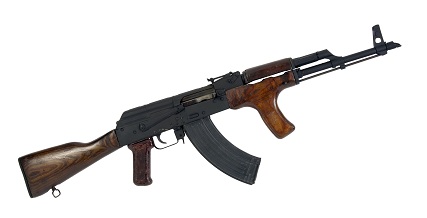
It is a mass-manufactured, international commodity, as iconic in its own dark way as a Coca Cola bottle or an iPhone. Designed by self-taught Russian inventor Mikhail Kalashnikov, the Avtomat Kalashnikova-47, AK47 for short, went into production in 1947. Durable, reliable, adaptable and light, it was exported in huge numbers, initially to the armies of states friendly to the Soviet Union. Its low cost and ease of use, however, gradually made it the weapon of choice for guerrillas, militias and indeed criminal gangs.
The Provisional IRA made extensive use of AK47s, many of them supplied by Libyan leader Muammar Gadaffi in the 1980s, during the conflict in Northern Ireland. So-called Republican paramilitaries caused the majority (58 per cent) of the more than 3,600 deaths in the conflict, including those of 713 innocent civilians. The largest single category of victims, however, was innocent Catholic civilians killed by Loyalist paramilitaries.



